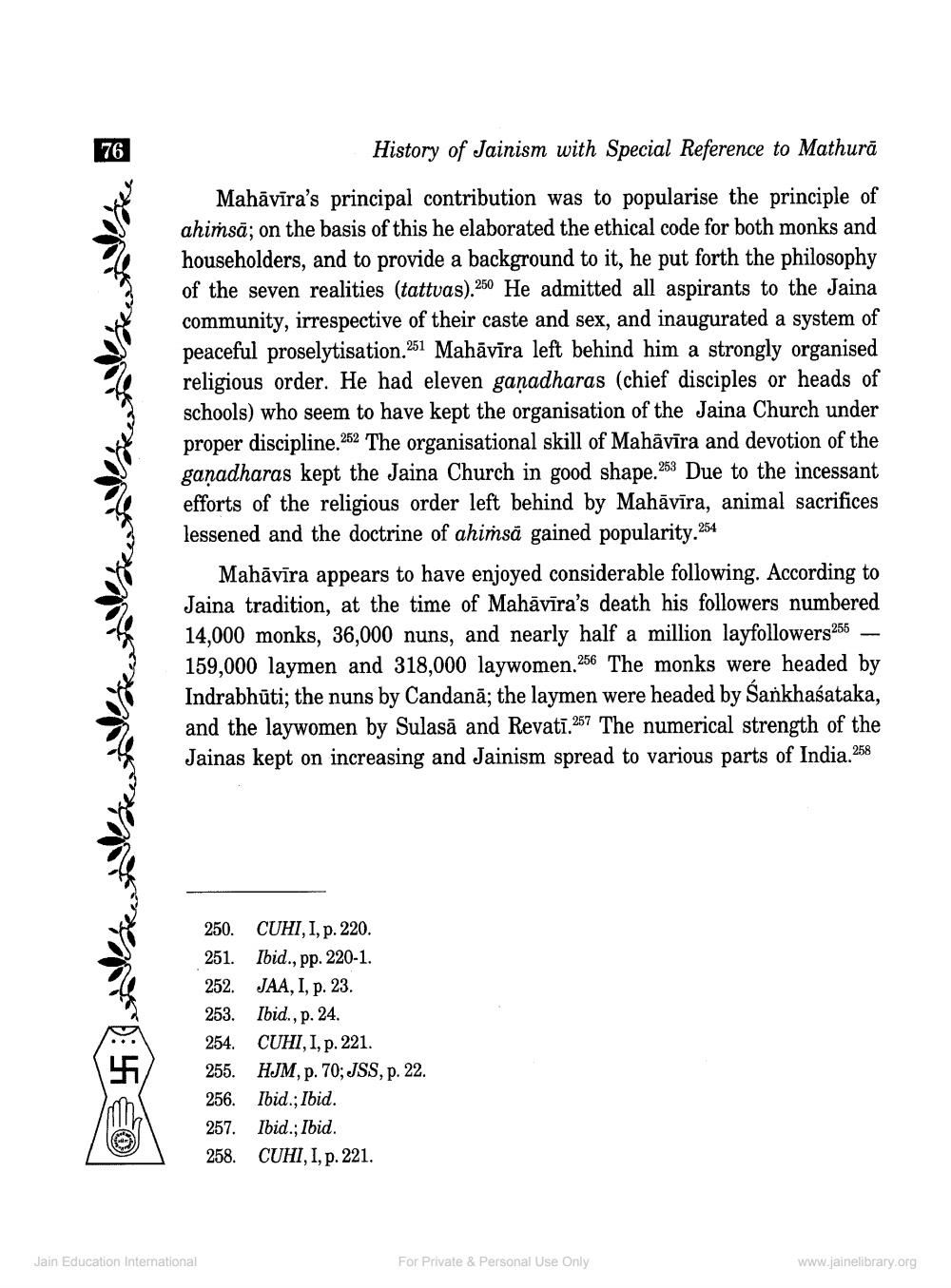________________
History of Jainism with Special Reference to Mathurā Mahāvīra's principal contribution was to popularise the principle of ahiṁsā; on the basis of this he elaborated the ethical code for both monks and householders, and to provide a background to it, he put forth the philosophy of the seven realities (tattvas).250 He admitted all aspirants to the Jaina community, irrespective of their caste and sex, and inaugurated a system of peaceful proselytisation.251 Mahāvīra left behind him a strongly organised religious order. He had eleven gaṇadharas (chief disciples or heads of schools) who seem to have kept the organisation of the Jaina Church under proper discipline. 252 The organisational skill of Mahāvīra and devotion of the gañadharas kept the Jaina Church in good shape. 253 Due to the incessant efforts of the religious order left behind by Mahāvīra, animal sacrifices lessened and the doctrine of ahimsā gained popularity.254
Mahāvīra appears to have enjoyed considerable following. According to Jaina tradition, at the time of Mahāvīra's death his followers numbered 14,000 monks, 36,000 nuns, and nearly half a million layfollowers255 - 159,000 laymen and 318,000 laywomen.256 The monks were headed by Indrabhūti; the nuns by Candanā; the laymen were headed by Sankhaśataka, and the laywomen by Sulasā and Revati.257 The numerical strength of the Jainas kept on increasing and Jainism spread to various parts of India.258
250. CUHI, I, p. 220. 251. Ibid., pp. 220-1. 252. JAA, I, p. 23. 253. Ibid., p. 24. 254. CUHI, I, p. 221. 255. HJM, p. 70; JSS, p. 22. 256. Ibid.; Ibid. 257. Ibid.; Ibid. 258. CUHI, I, p. 221.
Jain Education International
For Private & Personal Use Only
www.jainelibrary.org




